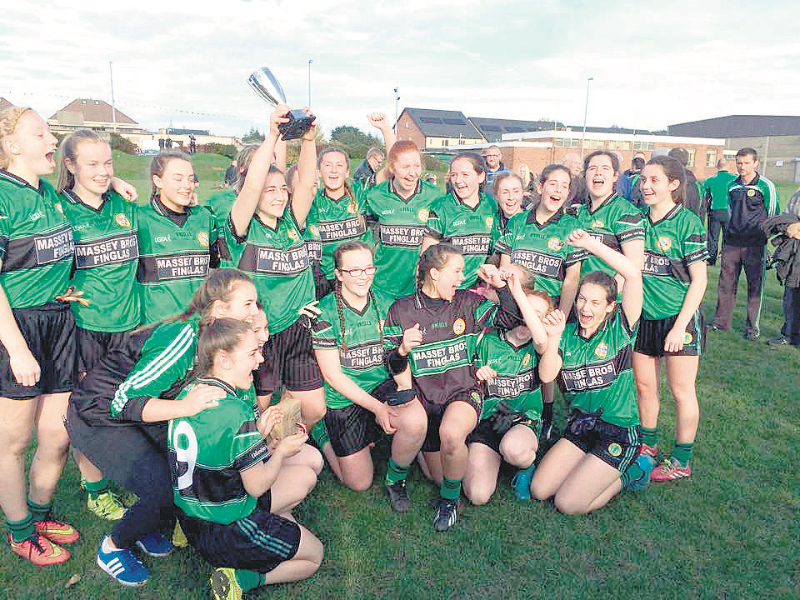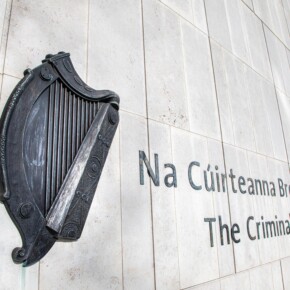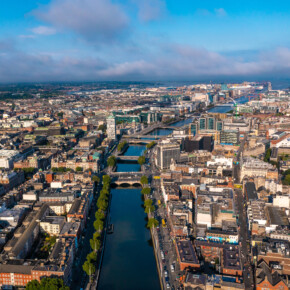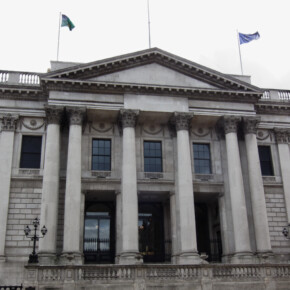Finglas club born from Ireland’s struggle
Dublin People 12 Mar 2016
NOW that the decade of Revolutionary Struggle and Change 1913-1922 is to be remembered, celebrated and commemorated it is important to remind ourselves that our national history is but the accumulation of local and social histories.
In Finglas we have much to celebrate and remember. The founding of the ITGWU (SIPTU) evolved not just from the Dockland Strikes and 1913 Lockout, but also from a major successful strike of North County Dublin farm labourers in which riots and shooting took place in Finglas between union strikers and strike breaking ‘scabs’ supported by the RIC.
The successful raid during the 1916 Rising on the RIC barracks at Ashbourne was launched from Finglas where Irish Volunteers from all over the Fingal region assembled for the attack.
Many others from the area were involved in the rebellion in the city itself.
In the war of Independence 1918-1922 Dick McKee from Finglas was officer in command of the IRA in Dublin and reported directly only to Michael Collins for his actions.
He was one of the men that handpicked volunteers for ‘The Squad’ who were responsible for the assassination of British spies on Bloody Sunday. He was murdered the same day in Dublin Castle.
During the Civil War there was much activity between pro-treaty and anti-treaty forces locally. In the internationally acclaimed play by Sean O Casey, Juno and the Paycock, the first line uttered “On a little by-road outside Finglas he was found” (murdered body) gives us a glimpse of the atmosphere abounding locally during that period.
But it was a simple meeting held to form a GAA club in 1917 that was to have the most enduring impact on the immediate lives of generations of Finglas families down to this day.
In the aftermath of the rising thousands of young men were rounded up and detained in the city and county. This was to cause total disarray in GAA Clubs.
When Jem Maloney from Dubber Cross was released from Richmond Barracks, along with some neighbours, he set about reorganizing GAA for Finglas/Dubber Cross area.
They called a meeting of like-minded people for the Wolf Tone Hall at 47C Phisborough Road in early 1917 where a motion was passed that a new club be set up.
It would be called Erin’s Isle and its colours would be green, representing Ireland, with a black band to represent those who gave their lives for Irish freedom.
That first season Isle’s entered junior, minor, schoolboys and Camogie teams into competitions. The men had moderate success but the Camogie team brought the first trophy to Erin’s Isle by beating Faughs in a league final in Croke Park the following year.
The games were again disrupted during the War of Independence and the Civil War. The mid 1920s to early 1930s were to see Isle’s climb the ranks from junior to senior in football and junior to intermediate in hurling.
In 1924 Maloney and his committee showed great foresight and took the decision to build a clubhouse and hall that was to be located in the village on the site where Powercity now stands.
This would be done on a voluntary basis and financed by subscriptions from club members. In 1926 the work was completed, and the ‘state-of-the-art’ building was large enough for public meetings, dancing and concerts.
Darts, rings, cards, table tennis and snooker on a full sized table were also played within its walls.
Finglas Fife and Drum Band and St Canice’s Boxing Club also enjoyed its facilities. The clubhouse played a pivotal role, not just for Erin’s Isle, but for the parish as a whole.
The years of the Second World War 1939/45 were bleak times for Finglas. Emigration took a huge toll on the local parish and the club’s rankings on the pitch were in decline.
Maloney and his committee met this new challenge head-on and went about buying a pitch for the club. They bought 5 ½ acres from Mr Arthur Craigie at £100 an acre.
This ground was situated behind St Canice’s Catholic Church. To turn a field into a pitch required a lot of time, physical labour and money, but it was done successfully.
Having its own home pitch in the heart of Finglas Village was a huge boost to the club’s morale. Unfortunately within a short time a Compulsory Purchase Order was put on the grounds by Dublin Corporation for the development of a new road, so the Seamus Ennis Road of today was created.
The corporation offered several alternative locations and finally a 10 ½ acre site at Farnham Place (Drive) was agreed upon. Again the voluntary efforts were called upon and what we have today is a lasting monument to their hard work.
The grounds comprise of senior, junior and all-weather pitches plus an 18 hole pitch and putt course. There are eight dressing rooms, a juvenile room, weights rooms, a hurling repair room a handball ally and a lounge/bar.
In addition a hall with a capacity for 450 people is also used by various groups in the local community for all types of social events.
In 2017 the Club will celebrate 100 years of activity. Today it caters for over 45 Juvenile and 12 adult teams, competing in football, ladies and gents, hurling and Camogie.
This year Erin’s Isle has over 1,000 registered members. To maintain and improve facilities for the centenary year, the club has embarked on another new challenge.
Friends of Erin’s Isle, has been set up with the expressed purpose of tapping into the goodwill that the club enjoys. Many ex-members and families who no longer reside in the area or even the country still regard Erin’s Isle as ‘THEIR’ club.
The response so far from current and ex-members has been enormously positive, but not surprisingly so, and these efforts are on going. Tens of thousands of people have passed through the club ranks and Erin’s Isle is one of the very few clubs in Dublin that has claimed Senior A championships in Hurling, Football and Camogie.
Liam Casey
- Finglas club born from Irelandâ??s struggle
- Finglas club born from Irelandâ??s struggle












